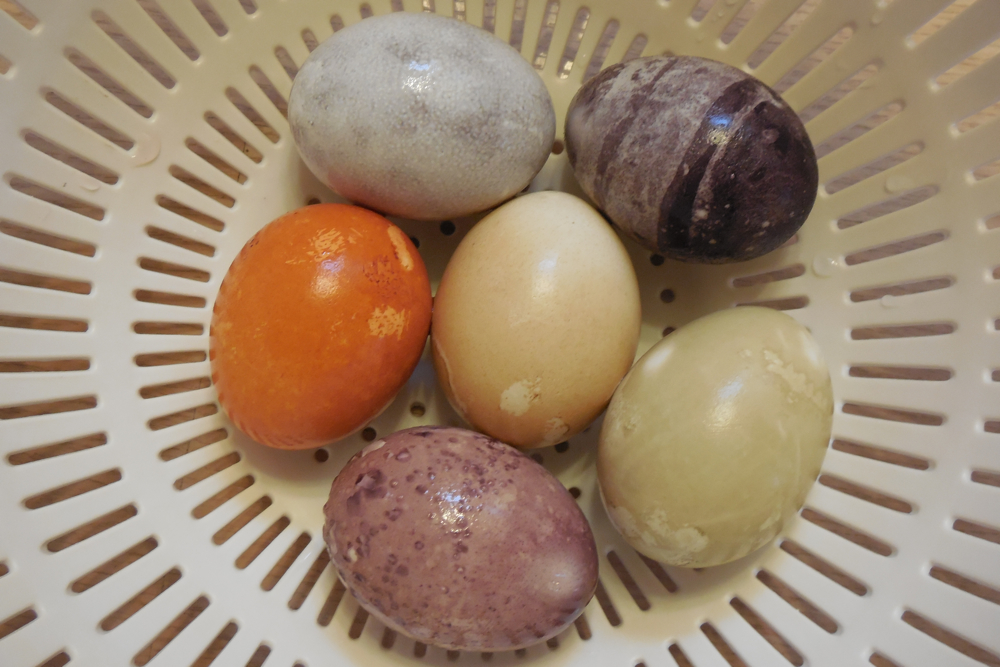Coloring Easter Eggs with Natural Dyes | Fun Science Experiments

Easter is the time of year when many of us do something special with our breakfast food. In this experiment, we are going to use science to color eggs using natural dyes. While using natural dyes is a bit more time consuming than those little tablets you buy at the store, gathering and preparing them can be an interesting alternative.
Colorful kitchen items
Begin by looking through your kitchen for brightly colored materials that stain when spilled. Coffee, tea, grape juice and red wine make interesting egg dyes. Plant materials from fruits, vegetables and kitchen spices can also be used to make interesting dyes.
To get different colors, use these materials:
- Brown or tan: strong coffee
- Dark purple: red wine
- Green: spinach leaves
- Blue: red cabbage
- Orange: yellow onion skins
- Yellow: grated carrots
- Pink: beets or cranberry juice
Other materials that you can try include spices like cayenne pepper, dill seed and turmeric. You could also try grated orange or lemon peels.
Chop, chop
It is helpful to chop or grate the plant materials into small pieces as you prepare your dye. You also may want to add white vinegar to your dye. With liquids, use 1 part vinegar to 3 parts dye. With vegetables and fruits, use 1 cup of water and 2 or 3 teaspoons of vinegar for every handful of plant material. The vinegar acts as a mordant. A mordant is a substance that reacts with the dye, changing its chemical bonds so that the dye attaches to the object being dyed. A mordant may change the color of the dye, so don’t be surprised if the colors are not what you expect. Experiment with leaving the eggs in the dye for different amounts of time.
Put the mixture of plant material, water and vinegar into a saucepan and bring it to a gentle boil for at least 5 minutes, then strain out the plant material and allow the dye to cool before submerging your eggs.
You may want to hard-boil the eggs first and then submerge them in your chosen dye overnight. Alternatively, you may want to try cooking the eggs by boiling them in your chosen dye. You get richer colors when you allow the eggs to remain in the dye overnight.
Other uses for dye
If experimenting with your Easter eggs was interesting, you may also want to experiment with using natural dyes to color cloth.
Use small test squares of white cotton or wool and experiment with different plant materials or even colored soils like yellow ochre or red clay. But BE CAREFUL! — When using your own ideas make sure to wear gloves and use a pot that you will not use to cook food. Some common plants in your yard can be irritating to the skin and can be toxic if ingested.
Sign up for the Live Science daily newsletter now
Get the world’s most fascinating discoveries delivered straight to your inbox.










